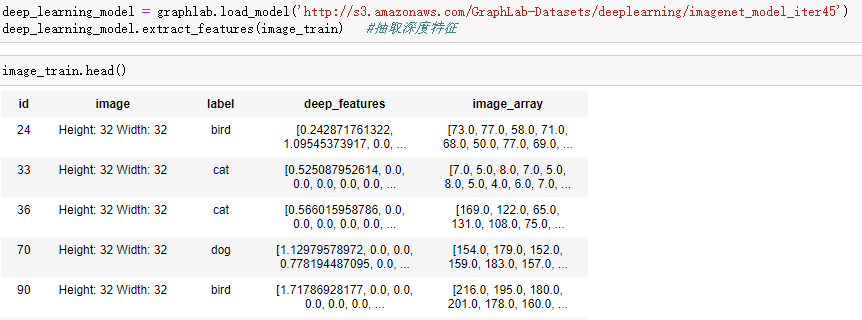本章内容源于慕课网的《机器学习入门-经典小案例》,需要安装graphlab(它比pandas速度快,可以直接从硬盘读取大文件,pandas只能从内存中读取,pandas不适合大文件)。
graphlab只能用于python2,由于我已经装过Anaconda3了,所以在Anaconda3的基础上搭建了python2.7的虚拟环境,虚拟环境下graphlab没法调用canvas进行可视化
本系列全程使用python2.7(和python3.6语法略有不同)
一、回归模型——房价预测
import graphlab import matplotlib.pyplot as plt %matplotlib inline sales = gl.SFrame('data/home_data.gl/') #下面这两行调用canvas进行网页可视化 #graphlab.canvas.set_target('ipynb') #设置为在ipynb界面显示 #sales.show(view="Scatter Plot", x="sqft_living", y="price") #绘出房价和面积的散点图 train_data, test_data = sales.random_split(0.8, seed=0) #一、构建单变量回归模型 sqft_model = graphlab.linear_regression.create(train_data, target='price', features=['sqft_living']) #模型评估 print test_data['price'].mean() #测试数据房价的均值 54W print sqft_model.evaluate(test_data) #sqft_model模型的最大误差 414W 和RMSE均方根误差 25.5W 差距还是有点多 plt.plot(test_data['sqft_living'], test_data['price'], '.', test_data['sqft_living'], sqft_model.predict(test_data), '-') sqft_model.get('coefficients') #模型系数 #二、构建多变量回归模型 my_features = ['bedrooms', 'bathrooms', 'sqft_living', 'sqft_lot', 'floors', 'zipcode'] #下面两行进行初步观察,看一下这些特征的数值分布 #sales[my_features].show() #sales.show(view='BoxWhisker Plot', x='zipcode', y='price') my_features_model = graphlab.linear_regression.create(train_data, target='price', features=my_features) print my_features_model.evaluate(test_data) #my_features_model模型的最大误差 353W 和RMSE均方根误差 17.8W #模型应用 house1 = sales[sales['id'] == '5309101200'] #取出一个实例 sqft_model.predict(test_data) #测试集房价预测 my_features_model.predict(house1) #对实例进行预测

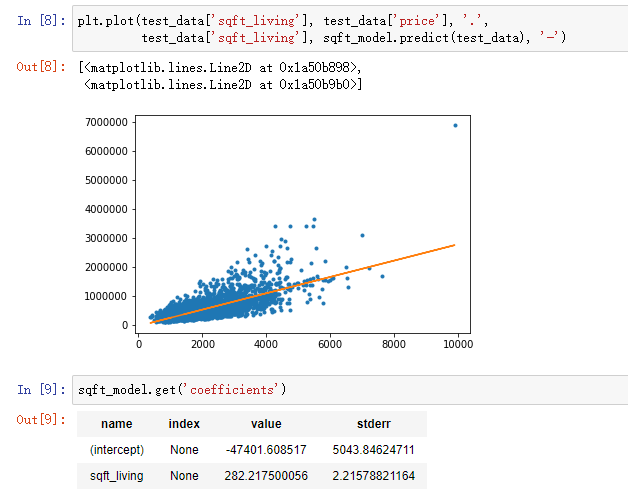
二、分类模型——商品的情感分类
import graphlab products = graphlab.SFrame('data/amazon_baby.gl/') #读取商品的评价数据 #对于每个评价建立单词计数向量 products['word_count'] = graphlab.text_analytics.count_words(products['review']) #下面这两行调用canvas进行网页可视化 #products['name'].show() #products['rating'].show(view='Categorical') #查看评分的分布 #定义正面和负面的标签 4/5分为正面,1/2分为负面,去掉中间的3分 products = products[products['rating'] != 3] products['sentiment'] = products['rating'] >= 4 train_data, test_data = products.random_split(0.8, seed=0) #训练情感分类器 sentiment_model = graphlab.logistic_classifier.create(train_data, target='sentiment', features=['word_count'], validation_set=test_data) #模型评估 sentiment_model.evaluate(test_data, metric='roc_curve') sentiment_model.show(view='Evaluation') #模型应用 giraffe_reviews = products[products['name'] == 'Vulli Sophie the Giraffe Teether'] giraffe_reviews['predicted_sentiment'] = sentiment_model.predict(giraffe_reviews, output_type='probability') #输出类型设置为概率 giraffe_reviews = giraffe_reviews.sort('predicted_sentiment', ascending=False) #评价排序 giraffe_reviews[0]['review'] #查看最棒的评价 giraffe_reviews[-1]['review'] #查看最差的评价

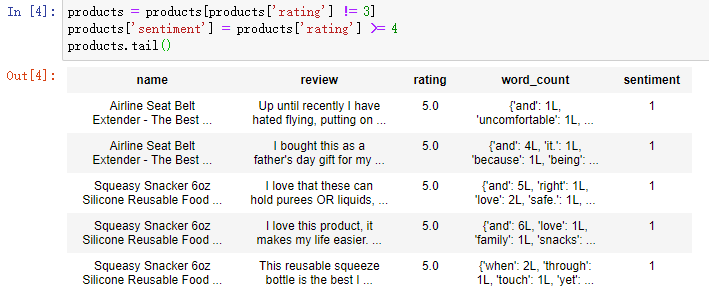

三、聚类模型——维基百科人物分类

假设词袋里有64篇文档,其中63篇都包含单词the,所以单词the的逆向文档频率为0。同理,单词Messi(梅西)的频率为4
import graphlab people = graphlab.SFrame('data/people_wiki.gl/') #分析奥巴马 obama = people[people['name'] == 'Barack Obama'] obama['word_count'] = graphlab.text_analytics.count_words(obama['text']) #取得奥巴马文章中的单词计数 obama_word_count_table = obama[['word_count']].stack('word_count', new_column_name=['word', 'count']) #将word_count分成word和count两列 obama_word_count_table.sort('count', ascending=False) #查看奥巴马文档中出现最多的单词(即词频降序排列) #计算语料库中的TF-IDF people['word_count'] = graphlab.text_analytics.count_words(people['text']) tfidf = graphlab.text_analytics.tf_idf(people['word_count']) people['tfidf'] = tfidf #people中构建新的特征tfidf #检查奥巴马文章中的TF-IDF obama = people[people['name'] == 'Barack Obama'] #重新读入奥巴马数据,此时读入后带有tfidf字段(若不重新读入,下面句代码会报错) obama[['tfidf']].stack('tfidf', new_column_name=['word', 'tfidf']).sort('tfidf', ascending=False) #按照TF-IDF降序排列(并非单纯的词频排序哈) #计算几个人之间的距离 clinton = people[people['name'] == 'Bill Clinton'] beckham = people[people['name'] == 'David Beckham'] print graphlab.distances.cosine(obama['tfidf'][0], clinton['tfidf'][0]) #奥巴马和克林顿的余弦距离为0.83 print graphlab.distances.cosine(obama['tfidf'][0], beckham['tfidf'][0]) #奥巴马和贝克汉姆的余弦距离为0.97 所以奥巴马和克林顿更“相似” #构建文档检索的最近邻域模型 knn_model = graphlab.nearest_neighbors.create(people, features=['tfidf'], label='name') print knn_model.query(obama) #谁和奥巴马最接近 print knn_model.query(beckham) #谁和贝克汉姆最接近



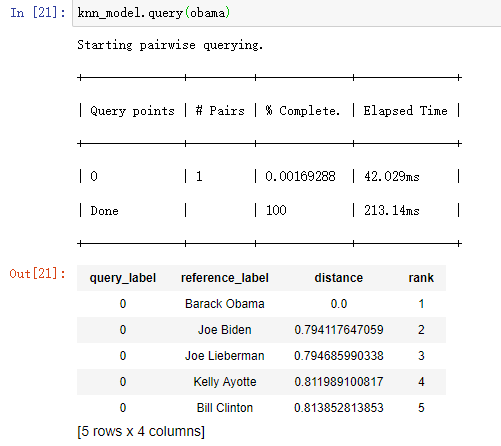
四、推荐系统——音乐推荐
import graphlab song_data = graphlab.SFrame('data/song_data.gl/') #song_data['song'].show() #展示数据集中最流行的音乐 print len(song_data) #111W条 users = song_data['user_id'].unique() #用户去重 print len(users) #6.6W条,和歌曲数目不同(因为一个人可能听很多首歌) train_data, test_data = song_data.random_split(0.8, seed=0) #基于流行度的推荐系统 popularity_model = graphlab.popularity_recommender.create(train_data, user_id='user_id', item_id='song') #对用户0和用户1的推荐,和最流行的音乐榜几乎一致 popularity_model.recommend(users=[users[0]]) popularity_model.recommend(users=[users[1]]) #基于个性化的推荐系统 personalized_model = graphlab.item_similarity_recommender.create(train_data, user_id='user_id', item_id='song') #对于用户0和用户1的推荐大不相同 personalized_model.recommend(users=[users[0]]) personalized_model.recommend(users=[users[1]]) #推荐系统的比较 model_performance = graphlab.compare(test_data, [popularity_model, personalized_model], user_sample=0.05) graphlab.show_comparison(model_performance, [popularity_model, personalized_model])
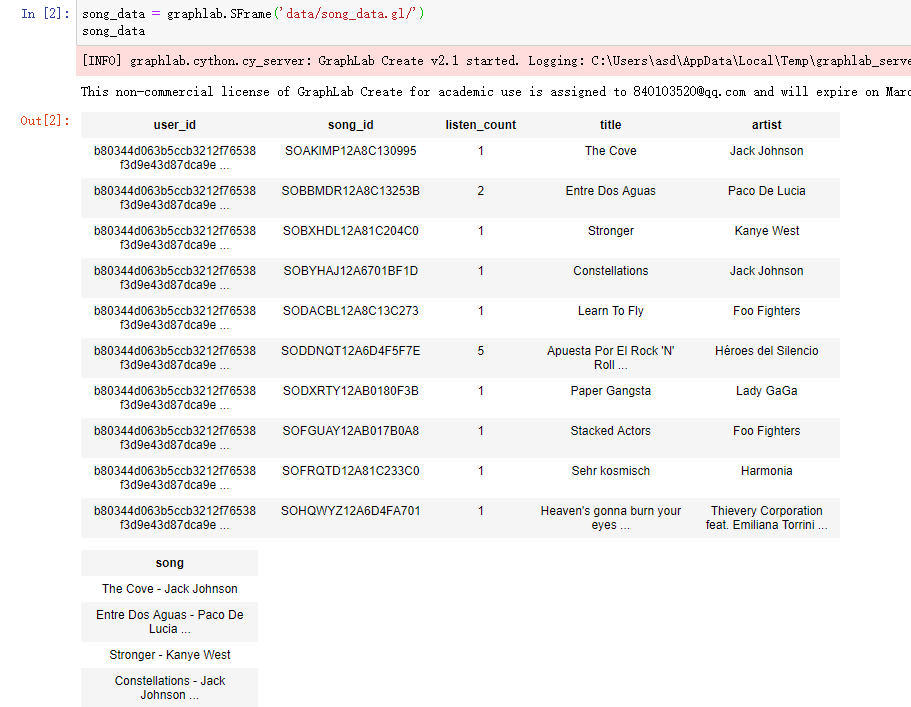
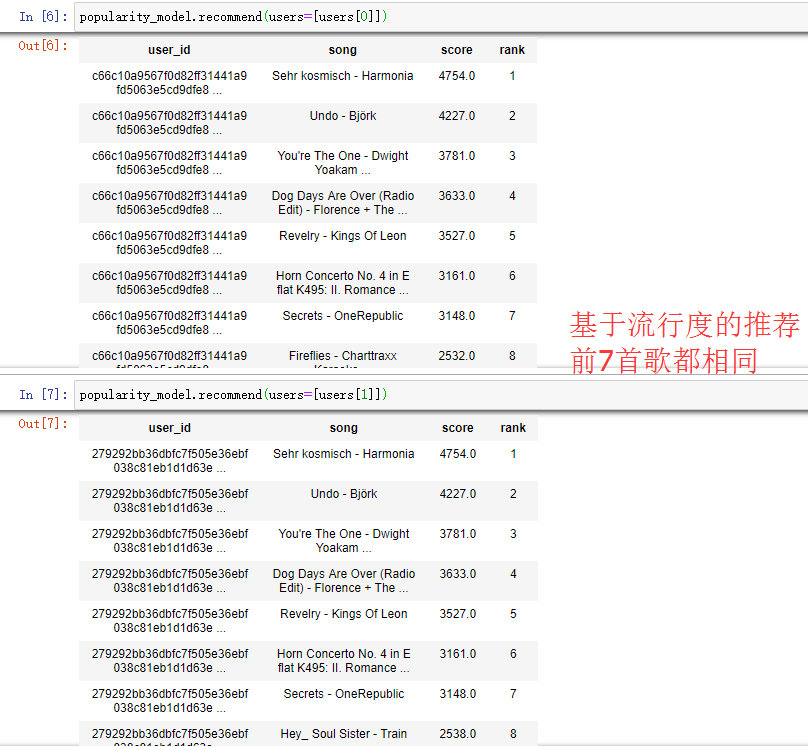
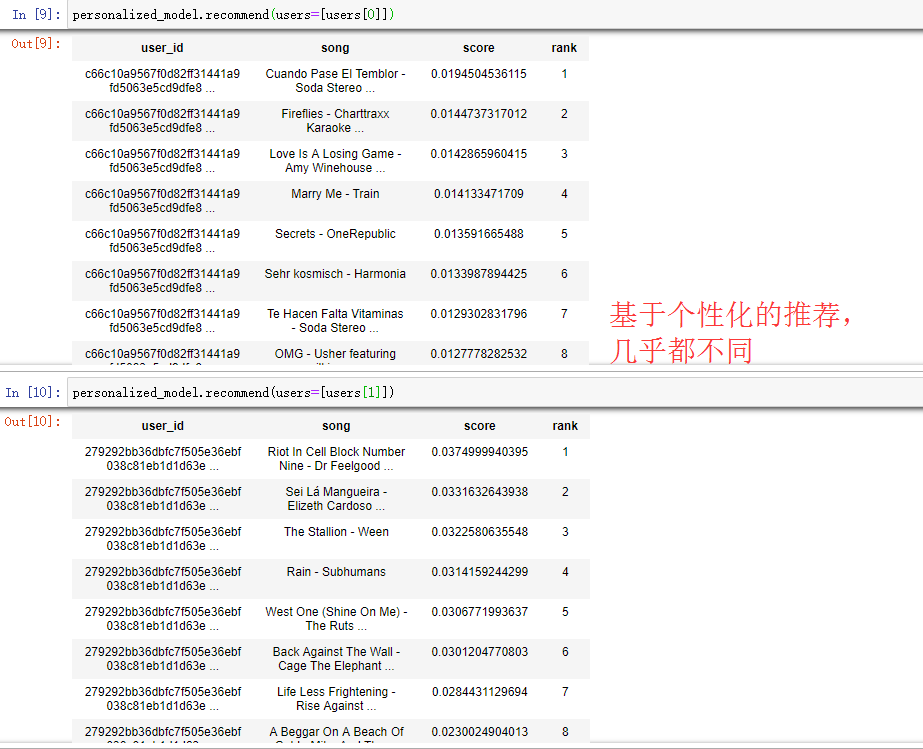
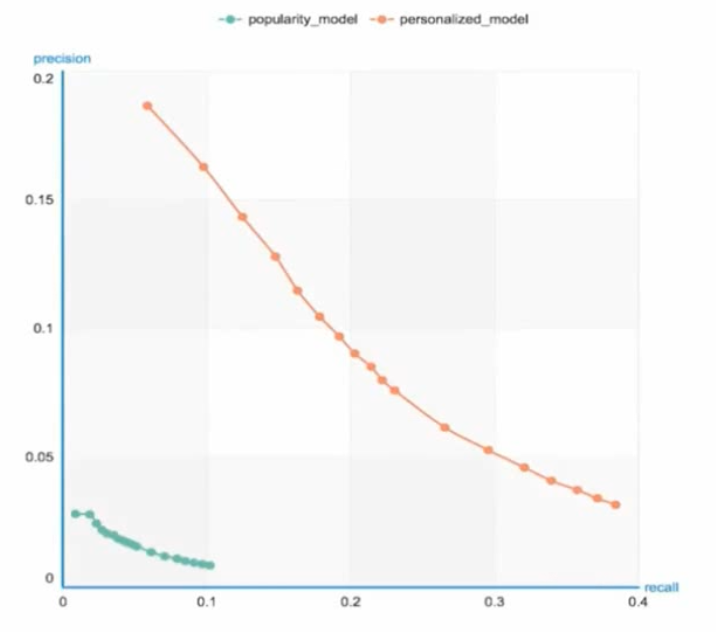
五、深度学习——图像检索系统
import graphlab image_train = graphlab.SFrame('data/image_train_data/') #下面两行运行很久,且报错 #deep_learning_model = graphlab.load_model('http://s3.amazonaws.com/GraphLab-Datasets/deeplearning/imagenet_model_iter45') #导入深度学习模型 #deep_learning_model.extract_features(image_train) #通过模型抽取image_train深度特征 #基于深度特征构建K近邻模型,从而进行图像检索 knn_model = graphlab.nearest_neighbors.create(image_train, features=['deep_features'], label='id') #寻找猫的相似图像 cat = image_train[18:19] #取出某只猫的图像,不妨给这只猫命名为tony #cat['image'].show() knn_model.query(cat) #进行检索 #通过reference_label关联id得到images(即取出reference_label=id的图像) def get_images_from_ids(query_result): return image_train.filter_by(query_result['reference_label'], 'id') cat_neighbors = get_images_from_ids(knn_model.query(cat)) #通过上述函数得到这只tony猫的“邻居” cat_neighbors['image'].show() #寻找轿车的相似图像 car = image_train[8:9] #car['image'].show() get_images_from_ids(knn_model.query(car))['image'].show() #构造一个lambda函数来寻找和显示最近的图像 show_neighbors = lambda i: get_images_from_ids(knn_model.query(image_train[i:i+1]))['image'].show() show_neighbors(8) #显示tony猫的“邻居” show_neighbors(18) #显示小轿车的“邻居”
